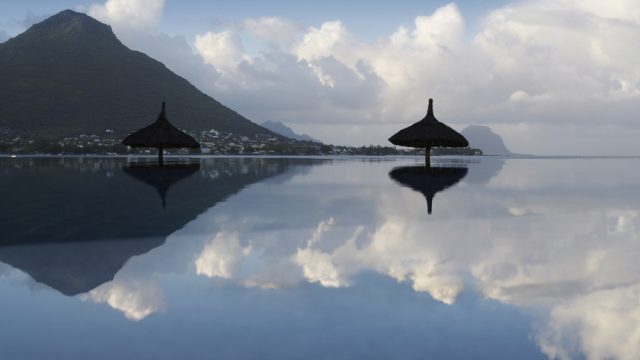Luxurious suites boasting round-the-clock personal butlers; secluded private beaches offering bespoke boat trips or massages on the sand; decadent meals served in white tablecloth surrounds – the archetypical Mauritian holiday is a lavish treat that’s out of reach for many travellers.
Indeed, Mauritius is awash with high-end hotels and honeymooners on once-in-a-lifetime jaunts, but there is more to the Indian Ocean island than all-inclusive resorts and private yacht charters. Travelling on a budget is possible here and without sacrificing the very essence of what makes Mauritius so delicious – you just need to know where to eat, sleep and play.
Eat
Mauritian food perfectly embodies the island’s coming together of cultures – a fusion of France and Africa with hints of China and India sprinkled around. The traditional tables d’hôte, where diners share a range of typical dishes in a family-style setting, are a fine way to experience island culture, but can be a pricey way to dine. Luckily, there are other, less expensive, options for those who want to experience Mauritius through its cuisine. Join queues of locals lining up to sample cheap eats like boulettes – Chinese-style dumplings in a fragrant broth, gateaux piments (doughy lentil-based snacks with a chilli kick) and dholl puri, a split-pea pancake filled with spicy accompaniments that is pretty much the national dish and is easy to find throughout the island. Snacks will rarely cost much more than Rs10 each (US$0.30). If you’re looking for something more substantial, find a low-key restaurant or takeaway joint specialising in biryani (a spicy rice dish, often with chicken) or mine frites (hearty portions of fried, Chinese-style noodles). Both can often be bought from tabagis – convenience stores – and shouldn’t set you back more than Rs100 (US$3). Markets are a great place to find an affordable lunch, with particularly tasty options in Port Louis (Monday-Saturday), Mahebourg (Monday only) and Centre du Flacq (Wednesday and Sunday). While you’re at the markets, stock up on mountains of fresh fruit, vegetables and seafood to cook up your own Mauritian feast for a fraction of the restaurant cost.
Sleep
Accommodation generally takes up a hefty chunk of your travel budget and in Mauritius, that chunk is particularly large. If you’re able to splurge on a night or two in an opulent all-inclusive resort, it’ll certainly provide a memorable end to your Mauritian stay, but there are plenty of options for those who can’t stretch to a pricey package deal. You will find guest houses – where you sometimes share the owner’s home – for around $60 for a double room. Offering the best value though, are self-catering apartments, often family-run, in some of the lesser known resorts – La Gaulette and the Mahebourg regions offer some excellent deals close to the ocean. Expect free Wi-Fi, a kitchen equipped enough to cook light meals in, a fridge, ocean-view balcony and possibly air conditioning throughout the apartment. If you do decide to head for a hotel, look out for off-season bargains – avoid December and January and opt instead for the mid-year months. You’ll still get plenty of beach days from May to September, but prices are considerably lower.
Do
Those counting the rupees might have to take care when choosing places to sleep or dine, but the island’s main attractions can be enjoyed by travellers on any budget. The number one drawcard costs nothing at all, so pack a market-bought picnic and head for one of the many white sand beaches skirting the verdant island. Don’t overlook the interior though – the Black River Gorges National Park is free to enter and offers lookout points, day hikes and bird-watching, all for no fee. If you want to tackle one of the more challenging hiking routes, a guide is highly recommended – try getting a group together and splitting the cost. Outdoor enthusiasts should also head to the Rivulet Terre Rouge Bird Sanctuary near the capital. Entrance is free and migratory species are abundant. Those preferring a more urban experience can find low cost diversion in the island’s capital, Port Louis. Wander the gardens, browse the central market and get acquainted with the island’s iconic dodo in the Natural History Museum, all without opening your wallet. Water sports and boat rides around the island can be costly, but if you want to take to the seas, try to team up with other travellers – rates quoted for boat trips are often per vessel, so the more seafaring travellers you can coax aboard, the better for your budget.
Travel
The obvious way to explore if you’re not relying on air-conditioned Audis transferring you from airport to resort and back, is with a rental car. Car hire is never cheap, but local companies tend to offer better rates than their international counterparts. Considering the size of the island, paying extra for unlimited mileage isn’t really necessary – 100-200km per day should be more than sufficient. If you’re comfortable on two wheels, renting a small motorbike is around half the cost of an entry-level car – just be ready for winding roads and drivers who don’t always indicate what they’re about to do! The Mauritian bus network is limited, but you can hop between the major centres from around 6am to 6pm. Journeys are slow but full of character – they’re also incredibly cheap, with a fare of Rs30 (US$1) getting you from one side of the island to the other. If you don’t intend to move around too much, travelling by taxi is an option – metres rarely exist so check up on local fares ad haggle accordingly.




